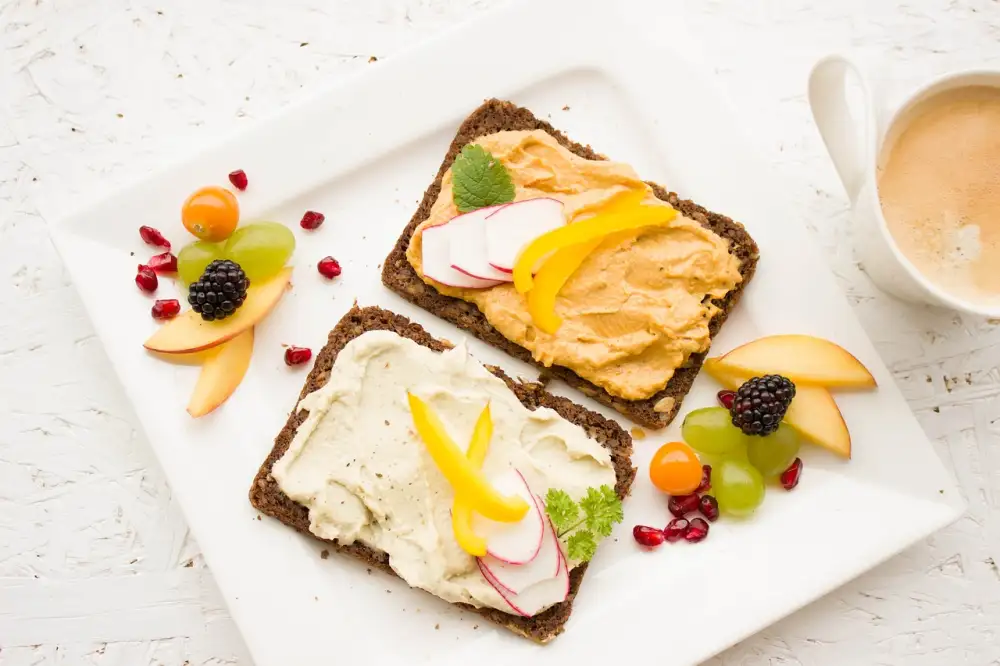Delicious and Nutritious Vegetarian Dishes: Exploring the World of Meat-Free Meals

- Benefits of a Vegetarian Diet
- Essential Ingredients for Vegetarian Cooking
- Popular Vegetarian Dishes from Around the World
- Easy and Delicious Vegetarian Recipes
- Tips for Creating Balanced Vegetarian Meals
- Exploring Plant-Based Protein Sources
- Incorporating Vegetarian Dishes into Your Weekly Meal Plan
- Vegetarian Cooking Techniques and Methods
Vegetarian dishes have gained popularity worldwide for their delicious flavors and health benefits. Whether you are a dedicated vegetarian or simply looking to incorporate more plant-based meals into your diet, exploring the world of meat-free cuisine can be an exciting and fulfilling journey. From vibrant salads to hearty soups and flavorful curries, vegetarian dishes offer a wide range of options that are both satisfying and nutritious. In this article, we will delve into the wonders of vegetarian cooking, discovering its benefits, essential ingredients, popular recipes from different cultures, and tips for creating balanced meals. So let's embark on this culinary adventure together and unlock the secrets of delicious and nutritious vegetarian dishes!
Benefits of a Vegetarian Diet
A vegetarian diet offers numerous benefits for both our health and the environment. Firstly, it is rich in fiber, vitamins, and minerals, which are essential for maintaining a healthy body. Secondly, studies have shown that vegetarians tend to have lower rates of obesity, heart disease, and certain types of cancer. Additionally, by eliminating meat consumption, we reduce our carbon footprint and contribute to the preservation of natural resources. Embracing a vegetarian diet not only promotes personal well-being but also supports a sustainable future for our planet.
Essential Ingredients for Vegetarian Cooking
When it comes to vegetarian cooking, there are a few key ingredients that are essential for creating delicious and nutritious meat-free meals. These ingredients not only add flavor and texture to your dishes but also provide the necessary nutrients for a balanced vegetarian diet.
1. Grains: Grains such as rice, quinoa, bulgur, and couscous are versatile staples in vegetarian cooking. They can be used as a base for salads, stir-fries, or served alongside vegetable curries.
2. Legumes: Legumes like lentils, chickpeas, black beans, and kidney beans are excellent sources of protein and fiber. They can be used in soups, stews, salads, or even made into veggie burgers.
3. Tofu and Tempeh: Tofu and tempeh are soy-based products that are rich in protein and can be used as meat substitutes in various recipes. They absorb flavors well and can be grilled, stir-fried, or baked.
4. Nuts and Seeds: Incorporating nuts like almonds, walnuts, cashews, and seeds like chia seeds or flaxseeds into your vegetarian dishes adds crunchiness and healthy fats. They can be sprinkled on salads or used in baking.
5. Fresh Herbs and Spices: Fresh herbs like basil, cilantro, mint, and spices such as cumin, turmeric, paprika bring depth of flavor to vegetarian dishes. Experimenting with different combinations can elevate your meals.
6. Vegetables: Of course vegetables play a crucial role in vegetarian cooking! From leafy greens like spinach and kale to root vegetables like carrots and potatoes - the possibilities are endless when it comes to incorporating veggies into your meals.
By having these essential ingredients on hand in your kitchen pantry or refrigerator, you'll have the foundation for creating flavorful vegetarian dishes that are both satisfying and nutritious.
Popular Vegetarian Dishes from Around the World
Vegetarian cuisine is not limited to one particular culture or region. In fact, there are numerous delicious and diverse meat-free dishes enjoyed by people all over the world. From India's flavorful curries like chana masala and palak paneer to Italy's classic pasta dishes such as spaghetti aglio e olio and pasta primavera, vegetarian options abound. Other popular vegetarian dishes include Mexican black bean enchiladas, Middle Eastern falafel wraps, and Chinese stir-fried vegetables with tofu. These dishes showcase the versatility and creativity of vegetarian cooking, proving that meat-free meals can be both satisfying and full of flavor.
Easy and Delicious Vegetarian Recipes
Looking to incorporate more vegetarian dishes into your diet? Here are some easy and delicious recipes that will satisfy your taste buds and nourish your body.
1. Lentil Curry: This hearty dish is packed with protein and flavor. Simply sauté onions, garlic, and spices in a pan, then add cooked lentils and coconut milk. Let it simmer until the flavors meld together, and serve with rice or naan bread.
2. Caprese Salad: A classic Italian dish, this salad is refreshing and simple to make. Layer slices of ripe tomatoes, fresh mozzarella cheese, and basil leaves on a platter. Drizzle with olive oil and balsamic vinegar, sprinkle with salt and pepper, and enjoy!
3. Veggie Stir-Fry: This versatile dish allows you to use up any vegetables you have on hand. Sauté your favorite veggies in a wok or skillet with soy sauce, ginger, garlic, and a touch of sesame oil. Serve over brown rice or noodles for a complete meal.
4. Spinach Quiche: Perfect for brunch or a light dinner, this quiche is both tasty and nutritious. Mix together eggs, spinach, cheese, onions, and seasonings in a bowl. Pour into a pie crust and bake until set. Serve warm or at room temperature.
5. Chickpea Tacos: Swap out meat for chickpeas in these flavorful tacos. Sauté chickpeas with taco seasoning until crispy, then assemble your tacos with tortillas, lettuce, tomatoes, avocado slices, salsa, and sour cream.
These recipes are just the beginning of the endless possibilities when it comes to vegetarian cooking. Experiment with different ingredients and flavors to create your own signature dishes that will leave you satisfied and excited about meat-free meals!
Tips for Creating Balanced Vegetarian Meals
1. Include a variety of fruits and vegetables in your meals to ensure you get a wide range of nutrients.
2. Incorporate whole grains like quinoa, brown rice, and whole wheat bread to provide essential carbohydrates and fiber.
3. Don't forget about protein! Include plant-based sources such as beans, lentils, tofu, and tempeh in your meals.
4. Add healthy fats like avocado, nuts, and seeds to provide satiety and promote overall well-being.
5. Experiment with different herbs and spices to enhance the flavors of your dishes without relying on meat.
6. Make sure to include sources of vitamin B12, such as fortified foods or supplements, as it is primarily found in animal products.
7. Plan your meals ahead of time to ensure you have a good balance of nutrients throughout the week.
8. Don't be afraid to try new recipes and cuisines from around the world to keep your meals exciting and diverse.
Remember, creating balanced vegetarian meals is all about incorporating a variety of nutrient-rich ingredients while ensuring you meet your body's needs for protein, vitamins, minerals, and essential fatty acids.
Exploring Plant-Based Protein Sources
One common concern for those considering a vegetarian diet is the question of where to get enough protein. However, there are numerous plant-based sources that can provide all the essential amino acids our bodies need.
Legumes such as lentils, chickpeas, and black beans are excellent sources of protein. They can be used in a variety of dishes, from soups and stews to salads and burgers. Tofu and tempeh, made from soybeans, are also great options for adding protein to your meals.
Quinoa is a complete protein grain that contains all nine essential amino acids. It can be used as a base for salads or served as a side dish. Nuts and seeds, such as almonds, chia seeds, and hemp seeds, are not only rich in protein but also provide healthy fats.
Vegetables like spinach, broccoli, and Brussels sprouts also contain surprising amounts of protein. Incorporating these into your meals will not only add flavor but also boost your protein intake.
By incorporating a variety of plant-based protein sources into your diet, you can easily meet your daily protein requirements while enjoying delicious vegetarian dishes.
Incorporating Vegetarian Dishes into Your Weekly Meal Plan
Including vegetarian dishes in your weekly meal plan is a great way to add variety and nutrition to your diet. Start by choosing one or two days a week where you focus solely on vegetarian meals. This can be as simple as swapping out meat-based proteins for plant-based alternatives like tofu, tempeh, or legumes.
Experiment with different cuisines such as Indian, Mexican, or Mediterranean that offer a wide range of delicious vegetarian options. Incorporate ingredients like quinoa, lentils, and chickpeas into your meals to ensure you're getting enough protein and essential nutrients.
Plan ahead by researching new recipes and creating a shopping list that includes all the necessary ingredients for your vegetarian dishes. This will make it easier to stick to your meal plan and avoid last-minute temptations.
Don't forget about snacks! Incorporate vegetarian snacks like hummus with veggies or fruit with nut butter into your meal plan to keep you satisfied between meals.
Remember, incorporating vegetarian dishes into your weekly meal plan doesn't mean you have to give up meat entirely. It's about finding a balance that works for you and embracing the world of vegetarian cuisine for its health benefits and delicious flavors.
Vegetarian Cooking Techniques and Methods
When it comes to vegetarian cooking, there are various techniques and methods that can be used to create delicious meat-free meals. Here are a few popular ones:
1. Sautéing: This involves quickly cooking vegetables in a small amount of oil or butter over high heat. It helps retain the natural flavors and textures of the vegetables.
2. Roasting: Roasting vegetables brings out their natural sweetness and adds depth of flavor. Simply toss your favorite vegetables with olive oil, salt, and pepper, then roast them in the oven until they are tender and slightly caramelized.
3. Grilling: Grilling is not just for meat lovers! Vegetables like peppers, zucchini, eggplant, and mushrooms can be grilled to perfection. Brush them with marinade or olive oil before placing them on the grill for a smoky flavor.
4. Stir-frying: This Asian cooking technique involves quickly frying vegetables in a hot pan with a small amount of oil. The result is crisp-tender veggies that retain their vibrant colors.
5. Steaming: Steaming is a healthy way to cook vegetables while preserving their nutrients. Place your veggies in a steamer basket over boiling water and let them steam until they are tender but still have a slight crunch.
6. Blending: Blending is a great technique for creating creamy soups, sauces, and dips without using dairy products. You can blend cooked vegetables with vegetable broth or plant-based milk for a smooth and velvety texture.
By mastering these vegetarian cooking techniques, you can elevate your meat-free dishes to new heights of flavor and creativity. Experiment with different methods to discover your own signature vegetarian recipes!
In conclusion, embracing the world of vegetarian cuisine opens up a whole new realm of delicious and nutritious possibilities. Whether you choose to go completely meat-free or simply incorporate more plant-based meals into your diet, there are countless benefits to be gained. From improved health and environmental sustainability to exploring diverse flavors from around the globe, vegetarian dishes offer something for everyone. So why not give it a try? Expand your culinary horizons and discover the joys of cooking and savoring vegetarian meals that are both satisfying and good for you.
Published: 24. 11. 2023
Category: Food



